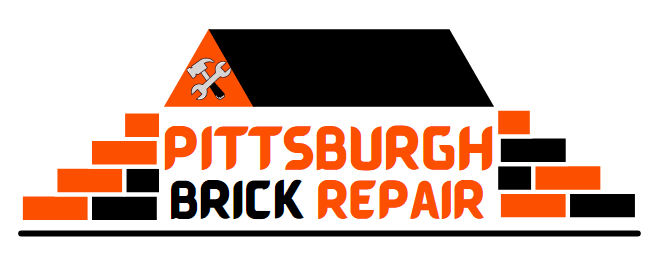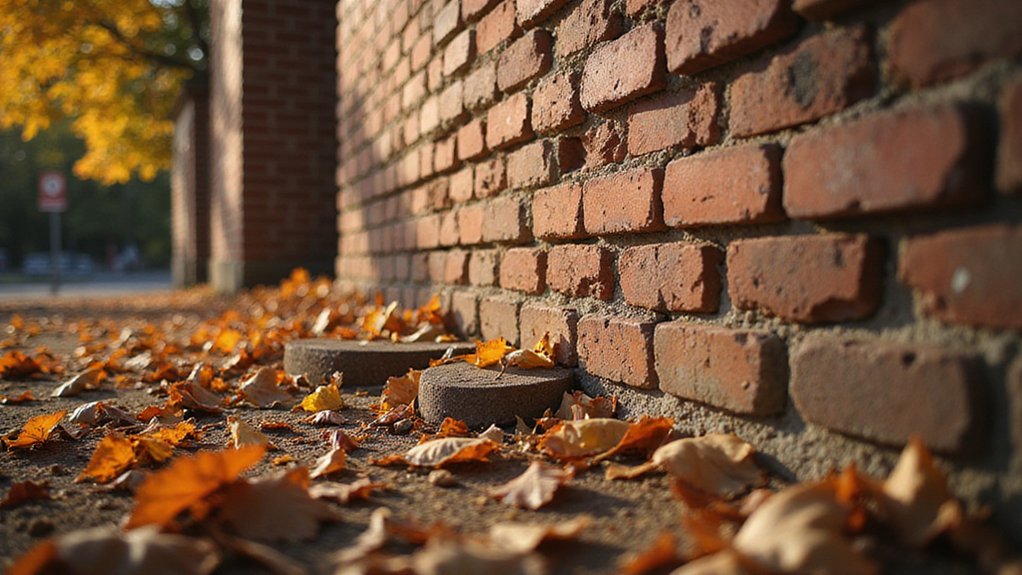As autumn’s crisp air settles in, you’ll find it’s the perfect time to address your brick wall’s mortar challenges. Deteriorating joints can compromise your property’s structural integrity, leading to costly repairs if left unchecked. Fall’s moderate temperatures create ideal conditions for tuckpointing, allowing professionals to restore your brickwork efficiently and effectively. Want to know how this seasonal maintenance can protect your investment?
Understanding Tuckpointing and Its Importance
If you’ve ever noticed crumbling mortar between your brick walls, you’re already familiar with the need for tuckpointing. This essential masonry technique helps preserve your home’s structural integrity and aesthetic appeal. Tuckpointing mortar deterioration occurs naturally due to wind and moisture, which break down the joints between bricks over time. By carefully removing deteriorating mortar and replacing it with fresh material, you’ll protect your brick’s durability and prevent further damage. Tuckpointing isn’t just a repair—it’s an investment in your property’s long-term health. When done professionally, it maintains your home’s structural composition, prevents water infiltration, and stops potential costly future repairs. Your brick walls will thank you.
How Temperature and Humidity Impact Masonry Repairs
Weather plays a critical role in the success of masonry repairs, particularly tuckpointing. Understanding how temperature and humidity affect your project can make or break the repair process.
Ideal temperatures range between 40-85°F. Low humidity supports perfect curing conditions. Moisture management strategies are pivotal. Wind and direct sunlight impact mortar setting.
Fall provides near-perfect conditions for tuckpointing. Moderate temperatures and lower humidity help guarantee proper mortar adhesion and consistent drying. By choosing the right season, you’ll maximize repair durability and minimize potential complications, giving your brick structures the care they deserve. Foundation repair specialists recommend fall as an optimal time for addressing brick masonry issues to prevent structural damage.
The Benefits of Autumn Brick Restoration
Because fall offers ideal conditions for brick restoration, homeowners can take advantage of this strategic season to protect and rejuvenate their masonry structures. The seasonal variations provide favorable conditions for tuckpointing, with moderate temperatures and lower humidity levels creating a suitable environment for mortar repair.
You’ll find that autumn’s mild weather allows workers to apply materials more effectively, ensuring better adhesion and longer-lasting results. By addressing your brick’s wear and tear during this time, you’re investing in your home’s structural integrity and aesthetic appeal, preventing potential costly damages in the future.
Signs Your Brickwork Needs Professional Attention
Maintaining your home’s brickwork requires a keen eye for potential structural issues that could compromise its integrity. Identifying early warning signs can safeguard you from costly repairs and preserve your property’s value.
Key indicators that your brickwork needs professional attention include:
- Visible cracked mortar joints
- Bricks that appear loose or shifting
- Water stains or moisture penetration
- Exterior wall bulging or uneven surfaces
Damaged brickwork isn’t just an aesthetic concern—it’s a structural risk. By addressing these signs promptly, you’ll protect your home’s foundation and guarantee its long-term durability and appearance.
Preparing Your Property for Tuckpointing Services
When scheduling tuckpointing services, you’ll want to take several proactive steps to guarantee a smooth and efficient process. Vital communication with your contractor about seasonal landscaping and potential disruptions is imperative.
Move any delicate outdoor furniture, potted plants, or decorative items away from the work area to prevent damage. Consider temporary relocation of landscaping features that might interfere with repairs. Preparing your property not only facilitates the tuckpointing process but also contributes to overall property beautification.
Selecting the Right Masonry Professional
After carefully preparing your property for tuckpointing, finding the right masonry professional becomes your next critical step. Vetting contractors requires careful research and strategic assessment of their qualifications.
Key factors to contemplate include:
- Years of professional masonry experience
- Documented portfolio of successful brick repair projects
- Valid licensing and insurance credentials
- Positive customer reviews and references
You’ll want a skilled professional who comprehends the intricate requirements of fall tuckpointing. Trust your intuition, ask detailed questions, and verify credentials to guarantee you’re selecting a contractor who’ll deliver high-quality, reliable brick restoration services that address your property’s specific needs.
Cost-Effective Strategies for Brick Maintenance
Brick’s resilience doesn’t guarantee perpetual perfection, and proactive maintenance can substantially reduce long-term repair expenses. You’ll want to prioritize budget-friendly options that maximize ROI and protect your property’s structural integrity.
Regular inspections can help you catch minor issues before they become costly problems. Consider seasonal maintenance, like fall tuckpointing, which allows you to address mortar deterioration when temperatures are ideal. DIY minor repairs can save money, but complex issues require professional skills. By investing small amounts now, you’ll prevent significant expenses later, ensuring your brick structures remain strong and visually appealing for years to come.
Long-Term Protection for Your Brick Structures
Because protecting your brick structures requires a strategic and proactive approach, long-term maintenance isn’t just about occasional repairs but creating an extensive preservation plan.
Address seasonal climate factors before they cause damage. Invest in professional tuckpointing to maintain structural integrity preservation. Schedule regular inspections to catch potential issues early. Use high-quality mortar compatible with your specific brick type.
Fall’s moderate temperatures provide an ideal window for thorough brick maintenance. By taking preventative steps now, you’ll safeguard your property’s appearance and value, ensuring your brick structures remain strong and visually appealing for years to come.
Frequently Asked Questions
Can I Attempt Tuckpointing Myself or Is Professional Help Necessary?
While DIY tuckpointing seems tempting, you’ll face significant challenges that demand professional skill. Complex techniques and specialized tools make this a job best left to skilled masonry professionals who’ll guarantee quality repairs.
How Long Does a Typical Tuckpointing Project Take to Complete?
You’ll find tuckpointing project timelines vary, but most residential jobs take 2-5 days. Labor requirements depend on your home’s size and mortar damage, with skilled professionals efficiently completing the work.
Will Tuckpointing Increase My Home’s Overall Market Value?
Tuckpointing can definitely increase your home’s market value by enhancing curb appeal and signaling well-maintained property, potentially elevating your resale price and making your home more appealing to potential buyers.
Are There Any Seasonal Warranties for Fall Masonry Repair Work?
You’ll often find seasonal discounts and weather-related warranties that protect your masonry investment during fall repairs. Many contractors offer guarantees that cover potential workmanship issues specifically tied to seasonal temperature changes.
Does Insurance Typically Cover Brick Restoration and Tuckpointing Expenses?
You’ll want to check your homeowner insurance coverage carefully, as most policies won’t cover routine maintenance. Masonry contractor recommendations suggest documenting damage and consulting your specific policy for potential partial reimbursement.

